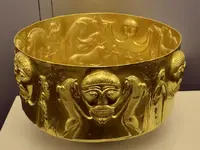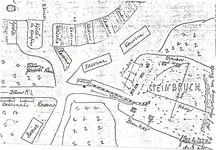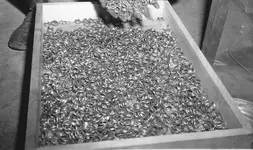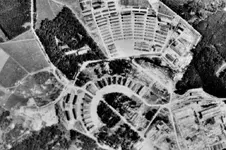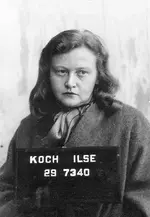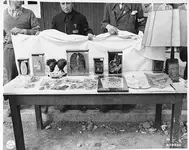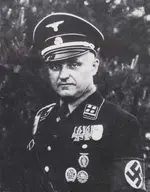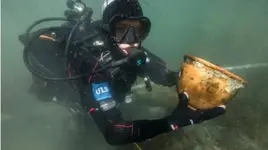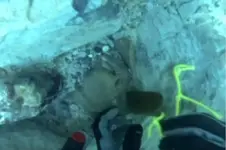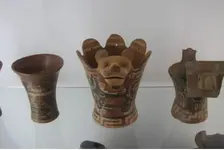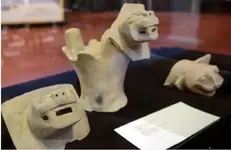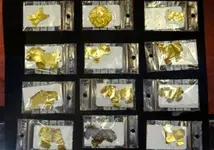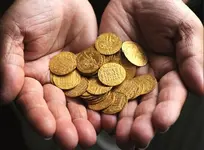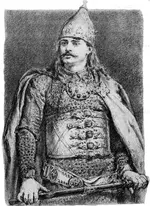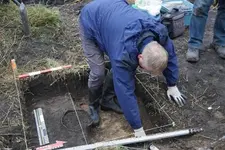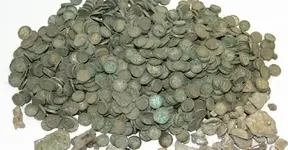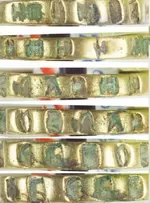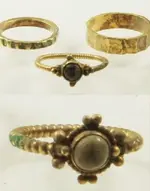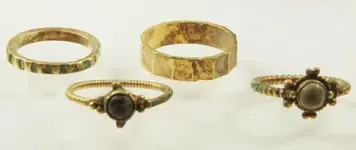Gidday Kanacki
Here is a newspaper article about the sons claim on part of his late fathers money in The Inter Ocean newspaper Chicago, Illinois dated 31 Mar 1901,
View attachment 1925148
While I should as add some discrepancies in newspaper reports can be placed as sensationalism from reporters adding little bits to the story.
Here is a more detailed version below.
Chillicothe, O., Sept. 12. — A remarkable suit, which brings into question the ownership of a buried treasure which was secured some time ago on an island of the Tristan Da cunha group in the South Atlantic, has just been filed in the County Court at Jackson, and the progress of the case will be watched with deepest interest.
The plaintiff is a man named Howard F. Summers, and the defendant is old and grizzled Captain Charles A. Henderson, and the story, whose details the filing of the suit has brought before the public, is one which would make Captain Mayne Reid and Clarke Russell turn green with envy.
Young Summers alleges that he is the only son and heir of Captain William H. Summers, who, before the war, was master of the clipper built brig The Lark. At that time she was a smuggler, but during the war she turned privateersman, and was so successful that her captain and crew grew rich.
The captain was especially fortunate and succeeded in amassing a fortune of $175,000, all of which he kept in gold and notes in a heavy chest in his cabin. In 1864 the barque ran into a terrific hurricane and was blown away into the South Atlantic, near the Tristan d'A cunha Islands, where she was sighted by a man-of‑war and was run ashore and scuttled by her crew. All of the crew were taken prisoners with the exception of Captain Summers and his first mate, Charles A. Henderson, who succeeded in getting the chest with the fortune in it ashore and concealing it.
After living the lives of Robinson Crusoe's there for a time, they finally managed to escape, but could not take their treasure with them. On the voyage home Captain Summers caught the smallpox and died, leaving Henderson the sole possessor of the secret. Henderson finally reached home, but was unable to secure the money necessary to fit out a vessel to go out after the treasure. For thirty-three years he laboured to earn money, eating his heart out with the knowledge of the great fortune that lay beyond his grasp; and after many failures it was not until last year that he finally started from New Orleans in the Rover.
He reached the island in April without mishap and secured the money, amounting to $173,320. He got home safely, and since that time has been living quietly, enjoying his fortune. It was not until a few days ago that any one aspired to dispute his ownership of the money. Then a man about forty years of age, who gave his name as Howard F. Summers, reached Jackson, and after a short investigation and a conference with Captain Henderson, filed the suit noted above. He asks for the sum of $86,660, or one-half the amount secured by Henderson. He claims that Captain Summers had a wife and a son at Baltimore, that the wife has since died and that he is the son.
His father sailed away on what was to be his last trip, in 1863, and his family never heard anything more from him. It was known that the bark had been caught in a violent gale, and it was supposed that she had foundered. Mrs. Summers knew that her husband was possessed of a large fortune, but supposed that it had gone down with him. She died in ignorance of his fate, and it was only recently that his son learned of what had become of the money and at once took steps to recover his share of it.
Captain Henderson declares that Captain Summers never mentioned his family, and wants young Summers to prove his claims, which the latter alleges he can do without difficulty.
The island where the treasure was so long secreted and but recently unearthed is situated about half way between the coasts of Africa and South America, in latitude 38 degrees 71 minutesº south, longitude 64 degrees 32 minutes east, and has been christened Summers Island.
Here there was enacted several years before the rebellion one of those exciting dramas of the high seas which make the pages of Marryat and Stevenson and Mayne Reid of absorbing interest to all who love tales of adventure and feats of reckless daring.
While yet a mere boy, Captain Henderson ran away from home and shipped before the mast. In 1858 he had just gone to the United States, after a cruise to the West Indies, and in Philadelphia fell in with one Captain Summers. He said he was shipping a crew in his clipper-built brig the Lark, engaged in the fruit and spice trade with the West Indies and South America, and offered Henderson a position as mate. Henderson accepted the offer.
Just about that time the civil war was opening, the Lark started homeward from a South American port and ran into a violent hurricane, which blew her out of her course eastward and southward for over a week. During this time there had been no opportunity of taking an observation, and Captain Summers had no definite idea as to his whereabouts. On the ninth day the weather cleared, and an observation showed that the vessel was far out in the Atlantic, only about thirty miles south of the Tristan da cunha group. That same afternoon the look-out discovered a cruiser steaming at full speed, apparently directly for them.
There were lively times on deck when Captain Summers gave orders to put the ship about and try to run away. As a last desperate effort to elude the cruiser the brig ran into a little cove sheltered by a long reef. The cruiser could not enter the cove, but hove to outside and prepared to lower her boats. The only refuge for the crew was on the island, and there they were safely landed in a hurry. It was at this moment that Henderson learned the secret which had puzzled him. Captain Summers took him down into the cabin, and, closing the door, said:
"Henderson, I have here a chest containing nearly £35,000 in money. I want you to help me to take it ashore and hide it. If we succeed in getting away we will divide the money. If one of us dies the other shall have it. We can find a place on the island to conceal it."
Henderson agreed. After the crew had gone ashore he and the captain lowered the chest into the boat and rowed towards a part of the beach as remote as possible from where the crew had landed. Henderson and the captain jumped into the luxuriant under brush which grew down to the water's edge, dragging the heavy chest between them. After traveling a considerable distance they stumbled upon a natural cave, and, entering it as far as they dared, concealed the chest.
They remained there the rest of that day and all the following night, and it was not until the afternoon of the next day that they ventured out. Creeping cautiously down to the beach, they discovered that the cruiser had disappeared. They also saw that the Lark had been scuttled and sunk in the waters of the cove. Soon afterwards almost all the members of the crew joined them, and it was evident that the crew of the cruiser had made only a superficial search for them.
An exploration of the island, which was made the next day, showed how small it was, and Captain Summers determined to try to reach the Tristan da cunha group, which he calculated wore only thirty-five miles to the north. So the captain and the mate set sail in the small boat, and the crew in the larger one. The treasure was left behind, as the officers did not dare to let the crew suspect its existence. The boats were separated during the night, and the larger one was never heard of again, but on the morning of the second day the captain and Henderson sighted land, and finally reached the largest of the Tristan da cunha group. Here Summers caught the small-pox and died, and after several months' delay Henderson was picked up by a passing vessel and landed at New Orleans.
Henderson returned to Jackson, and after thirty-three years of saving, managed to get enough to buy the Louisa B. at New Orleans last January. He overhauled her and rechristened her the Rover. Claude Thompson, of Jackson, was taken along as mate, being a man upon whose courage and honesty Henderson could rely.
February 22 last the Rover started from New Orleans. Her departure and the purpose of it were noted at light in the New Orleans papers. The Louisa B. had formerly been the Frolic, one of the fleet of the Southern Yacht Club, and was a staunch little vessel. On April 12 the Tristan da Cunha group was reached. On April 14 Captain Henderson landed on the treasure island, and with but little trouble discovered, by the aid of his charts, the cove and the treasure chest. Its contents were found intact. The wreck of the Lark lay at the bottom of the cove.
One thousand dollars of the treasure were distributed among the members of the crew. The return trip was almost without incident, save for the fact that the Rover met baffling head winds and was over four months getting back to the United States, narrowly escaping capture by a Spanish cruiser on the way.
Captain Henderson landed at Philadelphia, where he deposited $150,000 of the treasure, bringing the remainder home with him. This $22,000 he has shown to many people in proof of his remarkable story, which is confirmed in every detail by Mr. Thompson. He also has his certificate of deposit in the Philadelphia Bank, and the most persistent doubters have finally had to admit the truth of the story.
Crow




